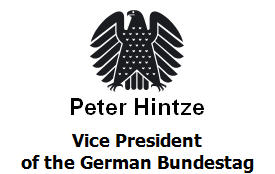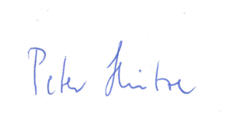Foreword to the exhibition Unspeakable Deeds in Unspeakable Places = Art of the Unspeakable
 |
 |
This year, 2015, we commemorate the liberation of Auschwitz and the end of World War II 70 years ago. The Nazi reign of terror and the German campaigns of subjugation and extermination are the darkest chapter in our history. Millions of Jews, minority groups, the sick and other innocent people were killed, many of whom children and adolescents. The monstrosity of the crime makes it a responsibility for us Germans to remember the victims for all time, and to boldly and resolutely oppose any form of totalitarian rule, oppression and intolerance.
There are numerous memorials in Germany to the crimes committed by Germans, and most are places where people experienced indescribable suffering and cruel death. The locations of the atrocities, or the unspeakable deeds, of the Nazis became de facto the unspeakable places of our history.
How do we deal with this part of our history? How do we approach the places where such horror took place? Beyond just absorbing historical facts, how can we possibly comprehend what happened and be able to empathise with the victims and their suffering? Not to mention morality. We as Germans have to answer these questions as a collective whole, and, as individuals, by our own means. Collective historical responsibility lies in the inner willingness of every German to confront what happened; it maintains our integrity. Each of us is faced with almost insurmountable hurdles on such a journey. Often when trying to describe what happened, and what the victims may have felt, our words fall painfully short. As the medium of language fails, so we reach an intellectual and emotional impasse in our ability to visualise and explain things. We feel bewildered and grief-stricken, desiring comfort and peace - for both victims and for ourselves. Remembrance becomes a constant, cautious and tentative attempt.
Professor Jürgen Erbach has visited twenty-four unspeakable places and approached our past in a very special way with his camera. His photographs - mostly symbolic details - are far more than a mere representation of what is seen. He combines a form of documentary photography with the memory of the crimes, searching for answers to the inconceivable.
On his trips, the photographer was accompanied by "Die Betende" and "Der Gebeugte", two bronze sculptures of a praying woman and a stooping, or crawling, man by Heinrich Janke. These figures - sometimes in the foreground, at other times rather hidden - are a key component in the composition of each picture, and add a further dimension to the memorials. In the crawling man we encounter the victims and their suffering; in the woman we recognise our search for answers and the desire for solace and forgiveness.
In the composition of figures and place, the atrocities and the victims merge subtly with the survivors and with us, the living. Moreover, the crime never dominates the victim or our prayers. Past and present form an indissoluble historical and moral unity, and Jürgen Erbach succeeds in giving us an impressive reflection on ourselves and our history - an urgent moral appeal to responsibility and conscience.
The photographs document a very personal approach by both artists towards our history, and offer all of us to follow them on their path into the past and to our inner selves. They waiver answers where there can only be questions, and hold their distance when the internal forum of an individual is addressed.
I wish to thank both artists, Jürgen Erbach and Heinrich Janke, for their concept and commitment. As patron I hope this touring exhibition of photographs reaches the hearts and minds of many people, and experiences the positive response it deserves.




